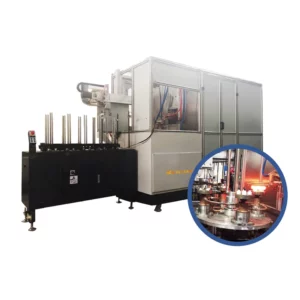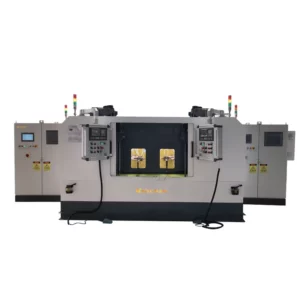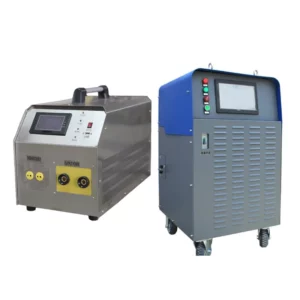What’s Induction Heat Treating?
Surface induction heat treatment in which the workpiece is heated locally by induction current. This induction heat treating process is often used for surface induction hardening, local induction annealing or induction tempering, and sometimes for overall induction hardening and tempering. In the early 1930s, the United States and the Soviet Union began to apply induction heating methods for parts surface induction hardening. With the development of industry, induction heating and induction heat treatment technology has been improved and its application has been expanded.
Induction heating and induction heat treatment equipment is mainly composed of induction heating power supply equipment, induction quenching machine and induction inductor. The main function of induction heat treating machine is to output alternating current at a suitable frequency. There are two kinds of high frequency current power supply equipment: electron tube high frequency generator and SCR converter. Medium frequency current power supply equipment is a generator set. General power supply equipment can only output a frequency of current, some equipment can change the current frequency, can also directly use 50 hz power frequency current induction heating.
Why use Ketchan Induction Heat Treating Equipment?
As a leading induction heat treating machine manufacturer in China, we have done thousands of induction heat treating solutions since established. And the advantages of the induction heat treating machine are as followings:
- Surface induction heat treating: Surface induction quenching makes the workpiece have a hard shell and a tough core. Therefore, it can replace part of the carburizing, induction hardening and tempering, and oxidation processes to save the alloying elements of the material. Due to the heating period, the oxide scale is very small and the deformation is also small.
- Local induction heat treating: It can precisely heat the parts where the workpiece needs to be quenched, especially in the case of magnetic conductors and high power densities.
- Energy-saving heat treatment: its energy consumption and carburizing, oxidation, induction hardening, and tempering compared with a great advantage, when the quenching part of the workpiece quality and the overall quality of the greater the difference, its advantage is also more significant. Induction heat treatment often has high added value.
- Rapid induction heat treatment: induction hardening heating time in seconds, generally within 2~10s, the production cycle is also short, especially in the use of self-tempering or random induction tempering, this process is similar to the machining process. For this purpose, modern induction quenching equipment has been arranged in the production line or automatic line.
- Clean induction heat treatment: the induction hardening liquid used for induction quenching is generally water or water solution with additives. When induction hardening, there is almost no oil smoke and the working environment is good.
- Convenient for mechanization and automation: mass production of induction hardening parts, generally equipped with step feeding, manipulator to take the workpiece, and robot control sensors and other devices to reduce physical labor.
How to Select Suitable Induction Heat Treating Solutions?
The choice of induction heat treatment solution is related to the depth of the heating layer required by the workpiece. For the workpiece with a deep heating layer, should choose the medium frequency induction heating machine. For the workpiece with a shallow heating layer, should choose the high frequency induction heating machine.
The power supply equipment with low current frequency should be used; Another criterion for selecting a power supply is the machine power. As the heating surface area increases, the induction heat treating machine power required increases accordingly.
When the heating surface area is too large or the induction heat treating power supply is insufficient, the continuous heating method can be adopted to make the workpiece and the induction heating coil move relative, first heating and then cooling.
But it’s best to heat the entire surface at once. In this way, the waste heat of the workpiece core can be used to temper the hardened surface layer, thus simplifying the process and saving electric energy. The main function of the induction heating and quenching machine is to position the workpiece and carry out the necessary movement. An induction heat treating system for providing a quenching medium shall also be attached. CNC induction hardening machine tools can be divided into standard machine tools and special machine tools, the former is suitable for the general workpiece, and the latter is suitable for mass production of the complex workpieces.
In order to ensure the quality of induction heat treatment and improve the thermal efficiency, the inductor with proper structure must be designed and manufactured according to the shape and requirement of the workpiece. Common induction coils include outer surface induction heating coil, inner hole induction heating coil, plane induction heating coil, and so on.
What is the Induction Heat Treating Application Field?
Normally, the heat treatment process realized by induction heating is called induction heat treatment.
Different applications can do the workpiece partial or whole induction quenching, induction hardening, induction annealing, induction normalizing, induction tempering, and induction quenching and tempering treatment.
Application: in modern automobile manufacturing technology, induction heating treating is also used in melting, brazing, blank heating (diathermic), thermal assembly, metal parts after bonding curing, coating drying and other fields.
- Billet, round bar, square bar induction forging: It is mainly used for induction heat treating various automobile parts (such as crankshaft, connecting rod, leaf spring, punching welding axle housing, various gears, and other parts) induction forging through heating treating.
The advantages are high heating efficiency, high-temperature control precision, good temperature uniformity of the blank, the small footprint of the equipment, energy-saving saving, and can improvement of the working environment. - Aluminium-magnesium alloy semi-solid casting: Non-ferrous metal semi-solid forming technology is to heat the metal to a solid-liquid mixing state, the use of high pressure will be molten metal shot into the cavity, through casting or pressure processing molding technology. Induction heating treatment technology is widely used in this process, which has the advantages of fast heating speed, energy saving, and high efficiency, good composition and organization uniformity after forming parts, good mechanical properties, and the process equipment meets the requirements of environmental protection. In the automotive manufacturing technology of advanced companies for aluminum alloy and aluminum magnesium alloy parts forming.
- Induction heat treating: Induction heat treating technology has been widely used in order to improve the fatigue performance and wear resistance of automobile parts. Typical parts are crankshaft, half shaft, camshaft, through the shaft, variable speed fork, variable speed fork shaft, guide block, rocker arm, rocker arm shaft, steering rack, spline shaft fork, output edge, shaft head, ball head pin, steering knuckle, and other parts; Local induction annealing of automobile parts can improve mechanical properties of carburized parts. It is mainly used to reduce the brittleness of parts and improve their toughness. It is widely used in the thread induction annealing of driving gear – a reducer, instead of the traditional lead furnace induction heating.
- Induction melting casting: It is mainly used for induction smelting and heat preservation of iron and steel materials and non-ferrous metals (aluminum alloy, brass, and other alloy die castings). The advantages are fast heating rate, high productivity, good temperature uniformity, less equipment investment, and good composition uniformity of liquid metal, which can improve the casting quality.
- Auto parts are cured by induction heating after bonding: In the use of thermo-rigid adhesive to automotive parts (metal and metal, metal and rubber, metal and glass, etc.) after bonding through induction heat treating to make the adhesive curing.
Advantages: no solder joints, do not destroy the rust layer, and the adhesive can reduce vibration while playing a seal. The induction heating technology can realize local induction heat treating, which has the characteristics of energy saving, high efficiency, small deformation of parts, and stable quality.
Applications: it is widely used in companies with advanced automobile manufacturing technology. Faw-Volkswagen Jetta, Balai, and Kaidi have 20 sets of this induction heat treating equipment in use. It is mainly used for curing the door, trunk cover, and engine cover after bonding, and is connected with the automatic production line. All the equipment above is imported technology, and the research on this technology has not been carried out in China.
- High frequency welded tube
- Induction braze welding: It is mainly used for induction brazing welding various auto parts (such as brazing of iron and steel materials, iron and steel materials, copper and copper materials).
Tags:Automatic Induction Heat Treating, Ball Stud hardening, Ball Stud heat treating, Ball Stud quenching, Ball Stud temepring, camshaft hardening, camshaft induction hardening, CNC hardening, CNC Quenching, CNC Quenching Machine, CNC Quenching Machine Tool, crankshaft hardening, crankshaft hardening machine, Disc CNC Hardening, for Sale, gear hardening, gear hardening heat treatment machine, gear induction hardening, Gear Induction Heating Machine, Gear Quenching Machine, Gear Teeth Quenching, heat treatment machine, High Frequency Induction Hardening, High Frequency Induction Quenching, Horizontal Hardening Machine Tool, induction ha, induction hardening, induction hardening auto valve, induction hardening machine, induction hardening tempering, induction heater, induction heating, induction heating machine, induction quenching, induction quenching machine, Induction Quenching System, Induction Scanner, Induction Scanning, induction shaft hardening, KETCHAN, KETCHAN Electronic, Manufacturers, price, rdening scanner, rod hardening, Shaft CNC Hardening Machine, shaft hardening, shaft heat treatment, shaft induction hardening, shaft induction hardening machine, shaft induction heating, shaft quenching machine, Suppliers, ultra high frequency quenching, vertical induction hardening machine, Zhengzhou KETCHAN, Zhengzhou KETCHAN Electronic
- You can visit Zhengzhou KETCHAN electronic Co.,ltd Youtube video room for more. Thanks.
Related knowledge
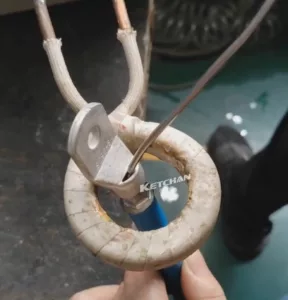
Applications of Induction Soldering
Induction soldering is a process that has a wide range of applications across various industries due to its ability to provide rapid, consistent, and precise heating. Here are some of
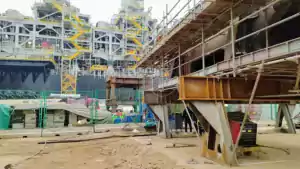
Post-Weld Heat Treatment (PWHT) of Steel Structures
What’s It? Post-weld heat treatment (PWHT) of steel structures is a process that involves reheating the welded joints to a certain temperature and holding them for a specified time. The
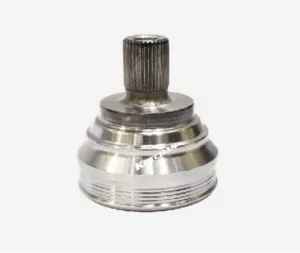
Induction Hardening Coils for Constant Velocity Joint
SX CV joint outer wheel fairway Induction hardening coil for SX constant velocity universal joint outer wheel fairway Hardening effect of SX CV joint outer wheel fairway CVJ Fixed inner

Induction Heating in Bearing Manufacturing
Induction heating is a process that uses electromagnetic induction to heat bearings, without direct contact. Induction heating has many advantages over conventional methods, such as faster heating, better temperature control,
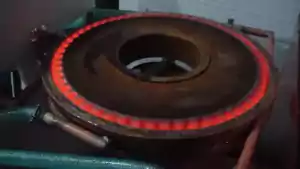
Gear Hardening Process
Gear hardening is a process that improves the wear resistance and fatigue strength of gears by creating a hardened layer on the surface of the gear teeth. There are different
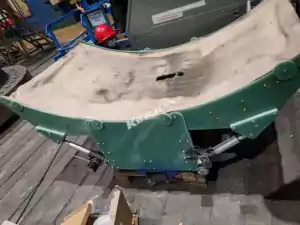
C-Shaped Induction Coil Can Lift and Close for Heating Rotating Cylinder
C type flexible induction heating coil can lift and close for heating rotating cylinder This customized C-type induction coil (wound with flexible cables) is designed to lift, open and close.
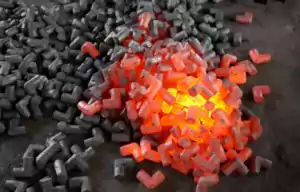
Fasteners Machining with Induction Heating
Fasteners machining with induction heating is a process that involves using an electric current to heat and shape metal parts such as bolts, screws, nuts, and washers. Induction heating
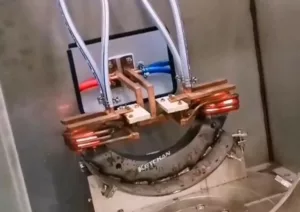
Induction Heating Solutions for Auto Parts
Advantages and Disadvantages of Induction Heat Treatment Auto Parts Induction heat treatment is a process that uses electromagnetic fields to heat metal parts or components without direct contact. It is
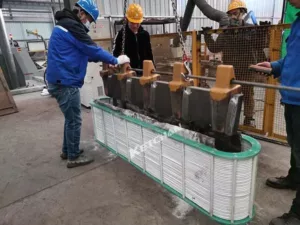
Preheating for Welding Tooth Blade Bucket Cutting Edge
What is high frequency induction hardening machine? Preheating is an important step for welding tooth blade bucket cutting edge, as it reduces the risk of hydrogen cracking and improves the
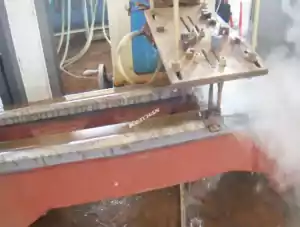
Induction Hardening of Rail
There are different methods of hardening the surface of the metal track, depending on the type of metal, the desired hardness, and the equipment available. Some of the common methods
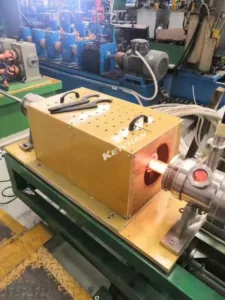
Stainless Steel Annealing Process
The annealing process for stainless steel is a heat treatment that alters the physical and sometimes chemical properties of the material to increase its ductility and reduce its hardness, making
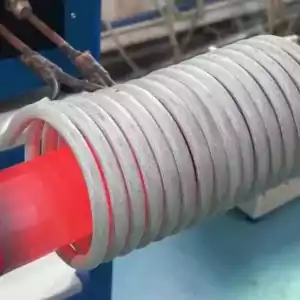
Pipe and Tube Induction Heating
Induction heating is a process that uses electromagnetic induction to heat a metal object without direct contact. It is widely used in the pipe and tubing industry for various purposes,

Why does metal generate heat due to electromagnetic induction?
Metal generates heat due to electromagnetic induction because of two main effects: Joule heating and magnetic hysteresis. Joule heating is the result of electric currents flowing through the

Induction Heating of Composite Materials
Induction heating is a technology that uses an alternating electromagnetic field to heat ferromagnetic and conductive materials and has been adapted to polymeric materials and composites in the past
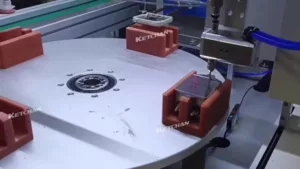
What can Induction Heating Technology Do for the 5G Industry?
Induction heating technology can potentially provide benefits for the 5G industry in terms of manufacturing, testing, and repairing 5G components and devices. Such as: Manufacturing of 5G components and
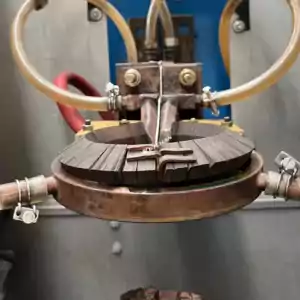
Induction Hardening of Earthmoving Machine Bush
Induction hardening of Earthmoving Machine Bush is a process that uses induced heat and rapid cooling to increase the hardness and durability of steel parts used in earth-moving equipment1.
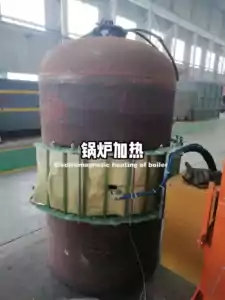
Electromagnetic induction heating of boiler and pipeline insulation
Why use electromagnetic induction heating for boiler heating? Electromagnetic heating boilers are devices that use induction heating to heat water or other fluids for various purposes, such as space heating,
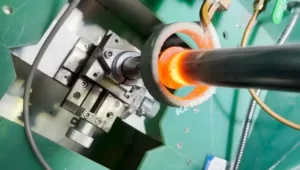
What is Induction Soldering and Induction Soldering Machine?
What is induction soldering? Induction soldering is a process of joining two metal surfaces together using a filler metal called solder. The solder melts at a lower temperature than

Induction Hardening Process Guidance
KETCHAN’s Induction Heating Machine Frequency Range: 1 kHz-600 kHz Get Machine Price Induction hardening is a type of surface hardening in which a metal part is heated by an alternating
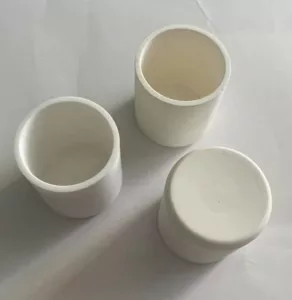
Ultra-high temperature induction melting method of rare metals
The ultra-high temperature induction melting method of rare metals is a technique that involves heating the metals to very high temperatures, usually above 2000 °C, in an induction furnace to
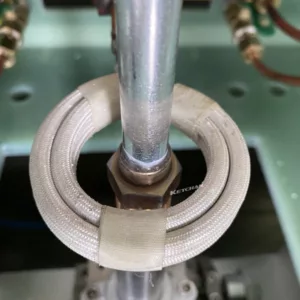
Induction Brazing Copper to Aluminum
High Frequency Brazing Copper and Aluminum Copper to Aluminum Brazing Induction Brazing Brass and Aluminum Induction brazing copper to aluminum is a process for joining these two dissimilar metals with
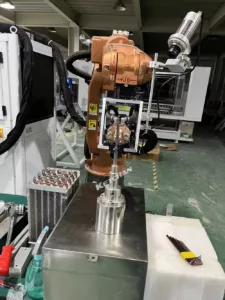
Induction Heating Gun
What is induction heating gun? The induction heating gun is part of a movable induction heating machine. An induction heating gun is a handheld device that uses high-frequency magnetic fields
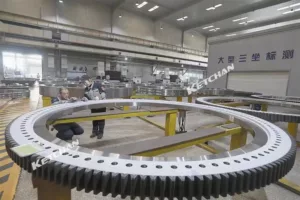
Wind Power Generator Bearing Induction Hardening
CNC Hardening Machine Tool for Wind Power Generator Bearing The large bearings in wind power generators are the key components in the design of wind turbines. The hardening quality of

Electric Vehicle Induction Heating & Hardening & Brazing
Electric Vehicles and Induction Heating In the past few years, people’s demand for electric vehicles has increased significantly, and electric vehicles have become a new track pursued by major

